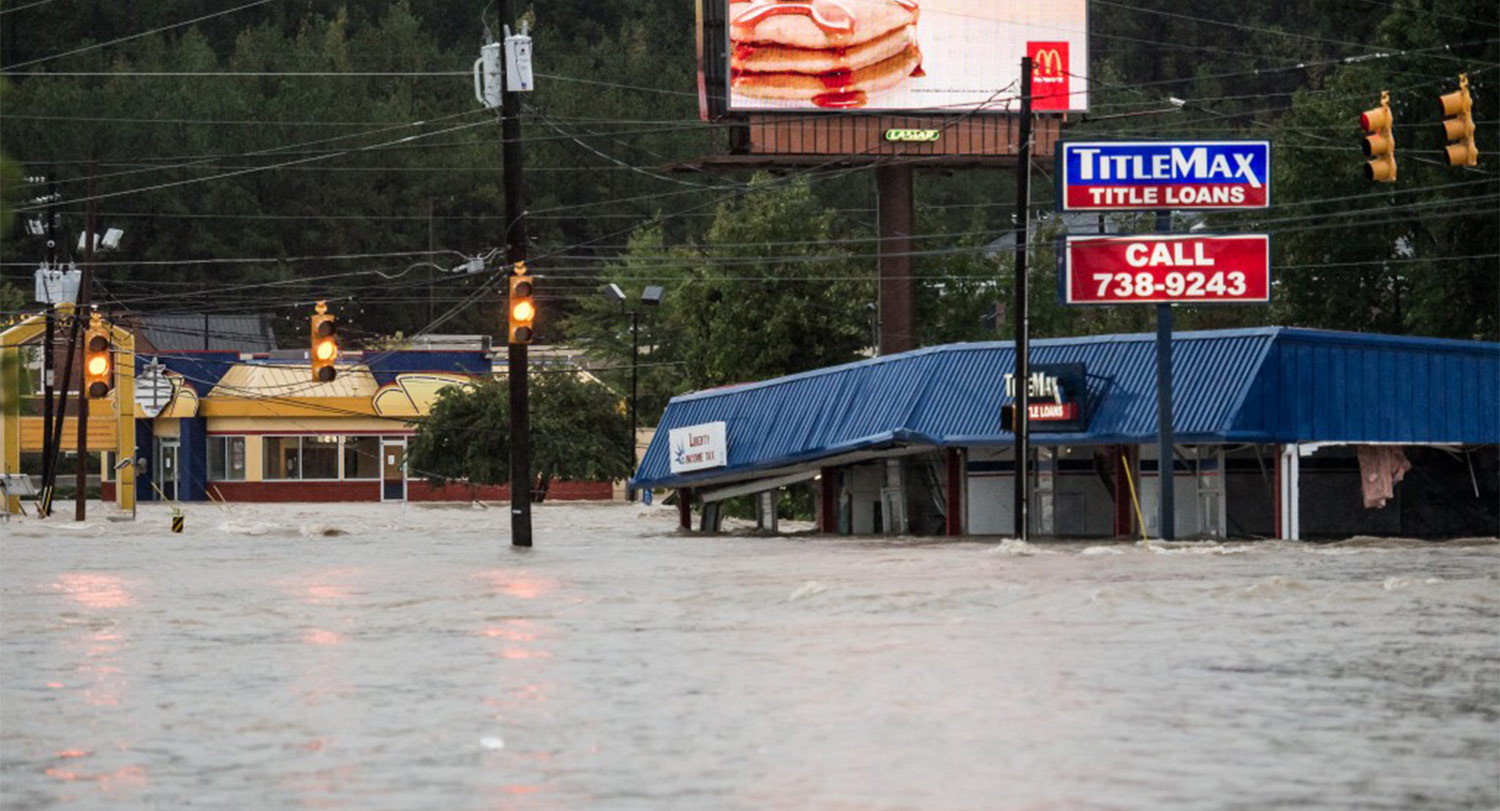
It happened a decade ago, but lessons learned from the catastrophic flooding of Oct. 1-5, 2015, in the Midlands of South Carolina are still being reckoned by University of South Carolina researchers and former students who were involved in the flood’s aftermath.
The flood killed 19 South Carolinians and caused billions in damage to homes, buildings and other infrastructure, including dozens of collapsed dams. The disaster began with a steady rain that morphed into a torrential downpour, dumping more than 20 inches over three days in some areas — an atmospheric river funneled from Hurricane Joaquin far offshore.
“Surprise is the big element in disasters like this because we, as a society, often don’t understand probability,” says Susan Cutter, co-director of the Hazards, Vulnerability and Resilience Institute in the McCausland College of Arts and Sciences, which studies the occurrence of and recovery from disasters across the country. “A hundred-year flood doesn’t mean there’s a flood of that proportion every hundred years — it means the probability of such a flood in a given year is about 1 percent.”
“The question is how do you plan for the unexpected in your area, particularly as we see more of these extreme precipitation events? We are slowly becoming aware of the impact of these heavy precipitation events inland across the nation in the same way that we have increased interest in understanding of sunny day flooding events along the coast with tidal surges.”
The 2015 flood cut power to more than 50,000 in South Carolina and temporarily incapacitated Columbia’s water treatment system. USC’s home football game against LSU several days after the flood was moved to Baton Rouge, while classes at Carolina were suspended for a week. During that time, thousands of USC students volunteered to help in recovery efforts around the city. One of them was Cory Alpert, an Honors College junior who had spent the summer in Brisbane, Australia, studying how the police department there had used social media to deal with flooding in 2010-11.
“I posted on Facebook and asked if anyone wanted to come with me to volunteer at Harvest Hope Food Bank,” Alpert recalls. “I had an SUV at the time and I figured I could take a few people with me when the roads opened up. I woke up the next day to thousands of people signing up to volunteer, and thousands more signed up in the days to come.
“I knew a few of the people who worked in Russell House who might be able to help — especially since USC had just opened a student leadership center. The morning that I suddenly became the leader of thousands of people who wanted to do this work, I walked in and found Luis Sierra, a leadership coach. I told him what I was trying to do, and resources across the university started moving.”
Alpert is now a doctoral student in Australia, studying the impact of artificial intelligence on democracy. He says lessons from the 2015 Midlands flood continue to be relevant.
“I speak a lot in public about what happened in Columbia, and how we used technology and things like Twitter to reach people across Columbia and get them the help they needed,” he says. “It was a core part of our strategy, and one that likely helped to save lives and property.”
While USC students were volunteering for flood relief efforts, the university’s research community mobilized to gather time-sensitive flood data. The university’s then-vice president for research Prakash Nagarkatti issued an emergency call for proposals and made available substantial internal funding for what would be 33 faculty-led research projects.
“We collected data on 14 dams that failed or were damaged in the flood and did a thorough analysis of what happened and why, which was published in a top journal in the field,” says Hanif Chaudhry, a veteran civil engineering professor in the Molinaroli College of Engineering and Computing. “Our study of the Midlands flooding in 2015 didn’t end there. We received major NSF funding to perform modeling of breached dams and levees with research partners in Belgium, Portugal and New Zealand.”
Chaudhry, who co-chaired with Cutter a conference in 2016 that revisited research findings from the 2015 flood, went on to conduct further flood modeling in the years after with funding from the U.S. Army Corps of Engineers and NOAA.
“The data we gathered is very useful for computer modeling of new or existing dams so that emergency planners can better predict the breaking point of an individual dam based on all available variables,” he says. “We also researched the use of biopolymers, which can be applied to existing dams and levees to fight erosion that occurs when those structures get overtopped in a major storm or flood.”
While the Midlands of South Carolina have been spared the level of catastrophic flooding that happened a decade ago, the threat is ever present, says Brett Robertson, associate director of USC’s Hazards, Vulnerability and Resilience Institute.
“We are increasingly interested in communities that, on the surface, might not fit certain criteria for being at risk for hazards or disaster and trying to better understand how we can effectively communicate to them that they actually are at risk,” Robertson says. “People often don't realize they are at risk until it's too late.
“We can refer to the 2015 flood or last year’s flooding in western North Carolina due to Hurricane Helene as examples of events that can be called unique, but just because they were deemed ‘unique’ doesn't mean they're not going to happen.”